PinotFile: 6.42 October 14, 2007
|
Bourgogne: Good Bottom FeedingIf you have looked at the prices for 2005 Burgundies at the Premier Cru or Grand Cru level, I am sure your first reaction was Huh? The 2005 vintage for red Burgundy is certainly stellar, maybe the best at every level in recent memory, but the weak dollar, tiny production and the hype have sent prices to levels that have made many Burgophiles gasping for air. Burgundy has never been more expensive. Fortunately, there is some beacon of hope in the still affordable lowest classification of Burgundy wine - Bourgogne (pronounced burr-gôn’yE). Bourgogne is one of France’s 26 wine regions and the regional Bourgogne appellation (Appellation Bourgogne Controlée) consists of four départements, Côte-d’Or, Saône-et-Loire, Yonne and Rhône (northern part). The Bourgogne appellation is the broadest of the 21 appellations in Burgundy, encompassing the entire Burgundy region, a total of 385 villages and 7,400 acres of vines. Grapes for red (Bourgogne Rouge), white (Bourgogne Blanc), and rosé (Bourgogne Cloiret), may come from anywhere within Burgundy (the terms ’Bourgogne’ and ’Burgundy’ are often used interchangeably), A map of Burgundy is on page 2. The grapes in Bourgogne wines are almost always 100% Pinot Noir. Cesar and Tressat grapes and Gamay, if grown in a Beaujolais cru vineyard, can be included. Gamay is always included in Bourgogne Passetoutgrains. The rock-bottom, poorest examples of Bourgogne are Bourgogne Ordinaire, and are not suitable for discussion here. Navigating your way through Burgundy can be daunting and you may be scratching your head already. Per-Henrik Mansson has said, “Burgundy is like any difficult subject, be it opera or modern art: The more you know about it, the more you realize how little you know.” The most important factors to keep in mind in choosing a Bourgogne wine, (or any level of Burgundy above Bourgogne, including Villages, Premier Cru and Grands Cru), is the vintage and the producer. Recent vintages 2002 and 2005 are great, 2003 and 2004 are good. In great vintages, like 2005, Burgundy is consistently excellent throughout the heirarchy from generic Bourgogne appellation wines to Grands Crus. The wines that are reviewed in the following pages include many prominent individual producers (who own their own vineyards) and négociants (merchants who buy grapes or wine and may or may not own vineyards). 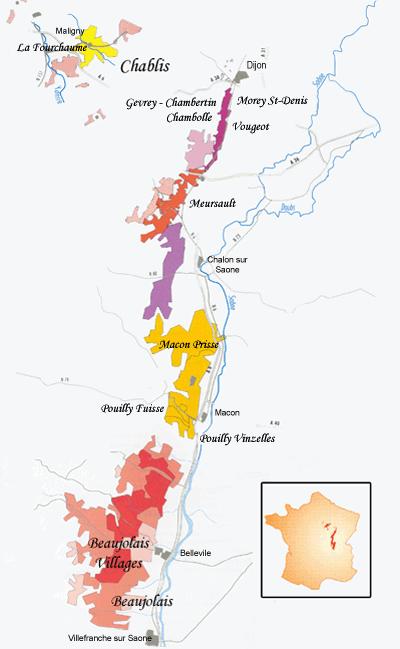 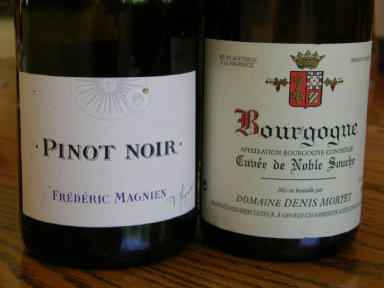 By sampling Bourgogne from multiple vignerons, one can develop a preference for the style of favorite producers and this can used be a guide for purchasing wines higher up the Burgundy hierarchy. Unlike many of the cherished Cru Burgundies, Bourgogne Rouge is readily available in the retail marketplace. Because of the popularity of the 2005 vintage, however, the wines are disappearing quickly. I have listed the wines by vintage, from the more recent, 2005, to the oldest, 1999.
2005 Gérard Raphet Les Grands Champs Bourgogne Cuvée Unique 13% alc.. Imported by North Berkeley Imports, Berkeley, CA. · The perfume starts off funky but airs out to reveal attractive cherry and orange peel notes. Tart and simple red current and cherry flavors are framed by lively acidity.
2005 Bouchard Père & Fils Bourgogne 12.5% alc., $14. Imported by Henriot, Inc., New York, NY. · Shy and shallow aromatics which are a bit musty. Simple strawberry and cherry flavors. Finishes with assertive acidity. Hard to cozy up to this wine. Website: www.bouchard-peretfils.com
2005 Domaine Bachey-Legros Veilles Vignes Bourgogne 12.5% alc., $17. Imported by Wine Agencies Inc., Van Nuys, CA. · A reticent but pleasing nose of cherry and mahogany wood. Red fruit driven, with svelte tannins and a tart finish highlighted with a whisper of oak.
2005 Domaine Nicolas Rossignol Bourgogne 12.5% alc., $17. Imported by Martine’s Wines Inc., Novato, CA. · Simple and sweet dark red Pinot fruits are soft and silky in the mouth. Red raspberry and a touch of funk fill the finishing aromatics. The finish is firm with weighty tannins. Simple but appealing.
2005 Frédéric Esmonin Bourgogne Hautes Cotes de Nuits 12.5% alc., $18. Atherton Wine Imports, San Jose, CA. · Scents of plum, black cherry, decay and citrus carry through to the long and chewy finish. The tannins are nicely integrated and the whole package is well balanced. Straightforward and likeable.
2005 Domaine Confuron-Cotetidot Bourgogne 12% alc., $20. Atherton Wine Imports, San Jose, CA. · Bright and appealing scents of crushed ripe strawberries and Xmas cheer. The spiced cherry flavors are crisp and juicy. Virile tannins on the finish suggest cellaring for maximum enjoyment.
2005 Domaine Heresztyn Bourgogne 12.5% alc., $20. Imported by Esquin Imports Inc., San Anselmo, CA. · Clean and fresh cherry aromas with exotic wood and cookie dough highlights. Lightly oak-tinged cherry red fruit. Smooth in texture with commendable elegance and a lingering citric edge on the finish. A great drink for one Jackson.
2005 Alex Gambal Bourgogne Cuvée les Deux Paris 13% alc., $21. Imported by Wine Warehouse, Los Angeles, CA. Gambal is a négociant-eleveur. · Light in color, light in intensity. Noticeable oak and toast dominate the aromatics throughout. Simple red fruits and a hint of spice. The finish is tart.
2005 Rubeus of Lore Pinot Noir from Burgundy 13.5% alc., $22. Produced for Rubeus Vineyards by Henri de Villamont, negociant Savigny-Les-Beaune. Imported by WX Imports, Novato, CA. (Purchased at a supermarket). · Ripe cherry and red raspberry scents lead to sweet and soft red fruit flavors that are enhanced by subtle oak. The tannins are fine-grained and there is plenty of cleansing acidity. Simple and straightforward, but an appealing drink.
2005 Bertrand Ambroise Cuvée Veilles Vignes Bourgogne $23. Imported by Robert Karcher Select, Washington, D.C. Website: www.ambroise.com. · Scents of barnyard, black fruits, oak and grass lead to simple flavors of red currant and dark berries. The finish is a touch bitter with notable tannic grip. Decent.
2005 Chateau de la Maltroye Bourgogne 12.5% alc., $25. Imported by Wine House Limited, San Francisco, CA. · This wine starts off quite alluring with a pure and extroverted nose of red berries with a hint of mint. On the palate, the healthy core of red Pinot fruits is framed by aggressive, drying tannins. This one needs some time in the cellar to soften.
2005 Domaine Taupenot-Merme Bourgogne 12.5% alc., $25. Imported by Thomas Wine Imports, Thousand Oaks, CA · The most California in style in the lineup. Extravagant super ripe berry nose with a hint of maple syrup. Rich core of intense red fruit. Plenty of t and a on the finish. Website: www.taupenot-merme.com.
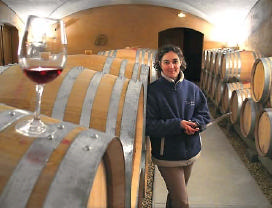 2005 Domaine Anne Gros Bourgogne 12.5% alc., 2005 Domaine Anne Gros Bourgogne 12.5% alc., $30. Imported by Atherton Wine Imports, Atherton, CA. Located in Vosne-Romanee, Anne Gros (right) is one of the new generation of Burgundian winemakers. She followed in her father’s winemaking footsteps in 1988 and started Domaine Anne Gros in 1995. Her wines are known for their silkiness and preciseness. · This wine is a real winner, a diamond in the rough. The nose is typically Burgundian with musk, earth, and baby diaper. The symphony of vivid, fresh red fruit flavors are glorious and mouth filling. The texture is plush and milky. Tannins are reigned in and the raspberry kiss on the lengthy finish is quite nice. Impressive for a wine of this level. Website: www.anne-gros.com.
2005 Frédéric Magnien Pinot Noir 12.5% alc., $36. Imported by North Berkeley Imports, Berkeley, CA. · This is an earthy wine from start to finish. Darker fruits are predominant but play second fiddle to the hearty mushroom, musk and meaty flavors. Tannins are weighty but not over the top.
2004 Domaine Chevillon-Chezeaux Bourgogne 12.5%, $17. Imported by Weygendt-Metzler, Unionville, PA. · On the lighter side of garnet, this wine offers cherry, woodsy and floral scents. The sour cherry flavors are thin and lead to a finish of mouth-puckering acidity and notable tannic grip.
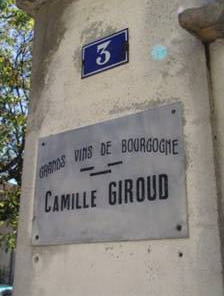 2004 Maison Camille Giroud Bourgogne 12.5%, $18. Imported by Adventures in Wine, a Becky Wasserman Selection, Daly City, CA. Founded in 1965 by the man of that name, for many years this producer was known for traditional, long-aged Burgundies. It was acquired in 2002 by Ann Colgin and husband Joe Wender. They brought in young winemaker David Croix, turned to Becky Wasserman for direction, and undertook a major revamping of the winery, including the introduction of modern winemaking, use of gentle oak and little racking. A remarkable turnaround has occurred, and the wines are now much more supple and approachable. · This wine has an appealing sappy cherry aromatic nucleus. The sweet core of caressing red fruit is framed by spice and musk. Harmonious from start to finish, this is a wine that will win hearts without pillaging the wallet.
2004 Domaine Fougeray De Beauclair Bourgogne 12,5%, $19. Imported by Vinalia Imports Inc., Camarillo, CA. · A perfectly elegant wine that is pale in color. Spiced cherries and vegetative decay aromas are enhanced by tart red fruit and flowery flavors. The texture is smooth as silk and the balance is impeccable. A discreet wine of great charm. Website:
2004 Domaine Henri Perrot-Minot Veilles Vignes Bourgogne 12.5% alc., $30. Imported by Martine’s Wines, Novato, CA. · A grassiness permeates the bright red and herbal flavors throughout. Firm tannins are evident on the finish. Website: www.perrot-minot.com.
2004 Domaine Anne Gros Bourgogne 13% alc., $32. Imported by North Berkeley Imports, Berkeley, CA. · An endless potpourri of ripe cherries, wax and Xmas spice keeps your nose in the glass. Red currents and red raspberries are elegantly presented with fine-grained tannins in the background. Commendable balance. Like the 2005 version of this wine, quite beguiling.
2004 Domaine Denis Mortet Cuvée de Noble Souche Bourgogne 13% alc., Imported by Martine’s Wines, Novato, CA. · A wine for lovers of Francois Fréres oak. Toast and char dominate the aromatics. Rich, red berry and cherry flavors are dominated by charred oak. The tannins are rugged.
2002 Domaine Michel Lafarge Bourgogne 12.5% alc., $20. Imported by Vinalia Imports Inc., a Becky Wasserman Selection, Camarillo, CA. · Rich aromatics with sweet red fruits, mushrooms, barnyard and a little Brett. Soft red and blue fruits are likeable, but the finish is too dry and tart.
12.5% alc., $30. Imported by Weygandt-Metzler, Unionville, PA. · Very funky aromatics with plenty of barnyard. Nicely weighted with perfect acid/tannin balance. Red and black berry flavors are lip-smacking. Still has notable tannins on the finish. Website: www.dugat-py.com
1999 Domaine Bachelet Bourgogne 12.5% alc.. Imported by Martin Scott Wines Ltd, a Becky Wasserman Selection, Lake Success, NY. · A decent but not terribly interesting wine with funky, woodsy scents, tart cherry flavors and a soft mouth feel.
1999 Joseph Roty Cuvée Pressonnier Bourgogne 13% alc.. Imported by Atherton Wine Imports, Atherton, CA.. · Light in color and body, this elegant wine smells of fresh sawed wood and mushrooms and tastes of rhubarb and red currents. Muscular tannins still persist on the finish.
12.5% alc., $30. Imported by Leroy Inc., San Rafael, CA. · The long cork was wet with black mold on the top. Funky nose with baby diaper and toast. Rich in texture, darker fruits predominate with a woodsy and earthy edge. Tannins are well integrated.
It doesn’t take a genius to read into these notes that the producers to seek out are Camille Giroud, Fougeray de Beauclair, Heresztyn, and Anne Gros. You won’t be disappointed with these quality Burgundy wineries. All of these producers’ wines are readily available in the United States.
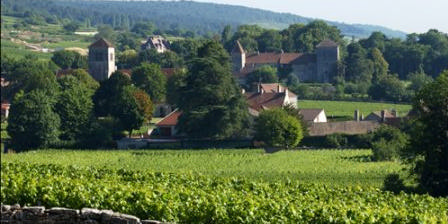
Want to learn more about Burgundy? How about a first-hand look with a guided tour. See next page.
French Wine ExplorersFrench Wine Explorers, based in Florida, is headed by Jean-Pierre Sollin and Lauriann Greene-Sollin, a Franco-American couple who both graduated from France’s esteemed highest level sommelier program. They organize pre-packaged private tours, wine tasting barge cruises, and customized private tours in Burgundy. Their trips are led by an impressive team of French wine experts and even can be tailored for wine and food professionals. The trips in Burgundy include visits to the most prestigious domaines, accommodations in historic hotels and chateaus, dining at Michelin-starred restaurants, and shopping and sightseeing in the town of Beaune. The focus of the trips is educational but the intent is to be fun and unpretentious. Trips are limited to 12 guests. A Burgundy and Champagne Prestige Tour is planned for May 26-31, 2008 ($4995 pp) and a Great Estates Burgundy Tour is September 8012, 2008 ($3995 pp). The excellent website, www.wine-tours-france.com, includes frequently asked questions, multiple testimonials and a wealth of tour information. Sign up for the e-mail newsletter on the website. A recent newsletter featured a concise and easily-understood article on malolactic fermentation by Mary Kirk- Bonnet. Sommelier Conseil and Wine Expert Guide for French Wine Explorers. I think you will find this a superior explanation of this critical step in winemaking.
The Mysterious “Malo” and What It Does For WineMary Kirk-Bonnet, Sommelier Consel Reprinted with permission from the French Wine Explorers wine tours On a recent tour of Champagne, we visited Marie-Noelle Ledru, an independent Champagne producer (recoltant-manipulant) in the Grand Cru village of Ambonnay. As we toured her cellars and she explained her process of making Champagne, she remarked that all of her Champagnes “font leurs malo,” literally translated as “do their malo.” The clients’ puzzled looks told me this needed explanation. They had heard it before, but well ... weren’t exactly sure what it meant. What is this mysterious thing that her Champagne “do?” Today, we’re going to talk a bit about oenology and look at this step of the winemaking process and how it influences the final taste of the wine you are (hopefully) sipping right now! “Malo” is winemaker’s lingo for malolactic fermentation (also abbreviated in written form as MLF). Wines that “do their malo” are wines that go through a malolactic fermentation. This process takes place right after the primary alcoholic fermentation, when yeasts convert grape sugar into alcohol. In MLF, it is lactic acid bacteria that do the work. These bacteria convert the “tarter” malic acid naturally found in wine (like the one found in green Granny Smith apples), into the softer lactic acid (like the one found in milk). For the MLF to take place, the temperature of the wine must be 68-73° F and levels of sulfur dioxide added to the must after harvest must be low enough to not kill the lactic bacteria. It is important to know that this fermentation step is controlled by the winemakers. They can choose to let it happen or not. The MLF can be blocked by preventative levels of sulfur dioxide or by cooling the wine down to 50° F. These days, some winemakers “inoculate the wine” (add in lactic bacteria) to ensure that the MLF takes place. Why have wines do their malo? The main reason is to reduce the acidity level of the wine. For grapes that are very tart, MLF gives the winemaker the possibility of producing a more balanced wine. Wines that have gone through MLF are also smoother, with more “roundness” in the mouth. Most red wines go through MLF. The astringent nature of tannins is more pronounced in the presence of the unconverted, harsher malic acid, but it is tempered when combined with the smoother lactic acid. In this way, MLF helps create a softer, mellower sensation on the palate. Wines that have gone through MLF are also more stable than those that have not. Wines can “do their malo” in the bottle if they haven’t already done it in the winemaking process. It is a rare occurrence, but if you perceive unpleasant fermenting aromas with a slight prickling on the tongue (caused by carbon dioxide, a byproduct of MLF), then chances are that lactic bacteria were still present and a little MLF took place in the bottle. Okay, but what about white wines? To do malo or not do malo, that is the question! Generally, white grapes that are grown in cooler, northern wine producing regions have higher acidity levels. Winemakers from these regions are more apt to let their wines go through MLF. Burgundy whites, for example, mostly all do their malo. Grapes used to make white wines in warmer, southern regions of France like Bordeaux or the Languedoc already have low acidity. In these regions, winemakers tend to block MLF in order to preserve the tart malic acid and bring needed freshness and vivacity to the wine. It is not that simple though. From my experience talking to vignerons from both the Loire and Champagne regions, I’ve learned that some prefer to let their wines do their malo, some don’t. When tasting Champagnes, for example, I have come across a wide range of acidity levels from very nervous to refreshingly smooth. It depends on the style of wine that the winemaker likes and wants to produce. In addition to changing acidity, MLF can also modify the aromas and taste of white wines. The milky, buttery aroma and taste you can find in some New World Chardonnays is produced by diacetyl, a byproduce of MLF. Winemakers who want this aroma in their wine will allow MLF to take place. On the other hand, winemakers who prefer a fruitier, crisper style will block MLF because they feel that the resulting lactic acid aromas dominate the more subtle, youthful fruit aromas. Certain aromatic grapes such as Riesling and Sauvignon Blanc generally do not benefit from MLF as it causes them to lose their very distinctive and refreshing varietal aromas. Chardonnay, on the other hand, is a grape that can gain in complexity and body when it undergoes MLF. To sum up, MLF is an optional winemaking step. The main effects of MLF are reduced acidity and mellower wines. A number of factors including acidity levels at harvest, grape variety and desired wine style all play a role as to whether the wine will be allowed to “do its malo” or not. Armed with this information, during your next visit to a winery, you can drop the question, “So ... do your white wines do their malo?” I’m sure you will impress!
Newer New Zealand ArrivalsPeriodically I like to sample some of the New Zealand Pinot Noirs that reach the western shores here in the United States, Although 55% of New Zealand’s wine production is exported and Pinot Noir exports are growing at a 56% clip, only a smattering appear in fine wine retail stores here. Geographically, New Zealand has both a North Island and South Island. In all, there are ten major wine regions. On the North Island are Northland, Auckland/Waiheke Island, Waikalo/Bay of Plenty, Gisborne, Hawkes Bay and Martinborough. Only Martinborough at the southern tip of the South Island is suitably cool for Pinot Noir. On the South Island are Marlborough, Nelson, Waipara/Canterbury and Central Otago, all of which have climates ideal for Pinot Noir. A map of New Zealand is on page 11. Some of New Zealand’s oldest plantings are in Martinborough. Most of the wineries are boutiquescale growers. The Pinot Noirs often show a more Côte de Nuits character with notable earthiness, firm structure, and dark cherry flavors. Marlborough is the largest winegrowing region in New Zealand. It is known for the Sauvignon Blanc that thrives in the sunny climate here, but half of the Pinot Noir in New Zealand is grown in Marlborough. The original vineyards here were clustered in the Wairau Valley, but new growth is expanding into the hillsides of many neighboring valleys like Waihopai, Omaka, Brancott and Awatere. Nelson is a province and town of the same name, located at the northern tip of the South Island two hours from Marlborough. Most of the wineries here are family owned. Waipara is the one area in New Zealand that has chalky loam soil with limestone. Sheltered from the sea by low lying hills, the combination of soils and microclimate have created a region of great promise for Pinot Noir. Central Otago is the planet's most southerly wine region. It is the fastest growing wine region in New Zealand. In 1995, there were 114 acres of vines here, and by 2006, 2,845 acres were planted, 70% to Pinot Noir. The climate in Central Otago is more continental than any other wine growing region in New Zealand for it is distanced from the ocean. Mountains are a prominent feature with snow in the winter, but plenty of sun in the summer and autumn. The growing season is not long, but the absence of a wet maritime influence allows tannins to ripen and acidity is retained without sugars becoming excessive. About half of the Pinot Noir here is made by the wineries or made by co-ops, the other half is put into Central Otago blends. Rolfe and Lois Mills of Rippon Vineyard by Lake Wanaka in Central Otago were the first to plant experimental vitis vinifera in New Zealand in the 1970s. In 1982, after years of research, they planted the Rippon vineyard , Central Otago’s first commercial block of vines. Later, in 1991, Felton Road became the first major vineyard and winery in Central Otago. Today there are a long list of Pinot Noir producers scattered over five sub regions of Central Otago (Gibbston, Cromwell, Bannockburn, Wanaka and Alexandra). Many critics feel Central Otago is the chosen spot for New Zealand Pinot Noir. The style of New Zealand Pinot Noir is still evolving as it is relatively young wine industry. A whole range of wines are produced, from elegant, feminine and classic Pinot Noirs, to more earthy, mineraldriven styles, to heavily-oaked, fruit bombs. Recurring criticism has been that the wines are overextracted, unbalanced and lack complexity. Sommelier Rene Chazottes notes, “The Pinot Noirs possess plenty of fruit but not sheer power. They are layered and sinewy and are fruit-driven with a strong acid backbone.” Henry Hariyono writes, “The style of Pinot Noir made in Central Otago is much in demand among younger wine drinkers in the United States today. With their rich, dark fruit aromas and flavors, intriguing floral and mineral nuances and ripe, harmonious acidity - not to mention their often considerable heft (typically 14% alcohol) - they pose a threat to the more established Pinots of Martinborough, which while often more complex, earthy and Burgundian, can come off as drier and leaner in comparison with the fruit bombs of Central Otago.” 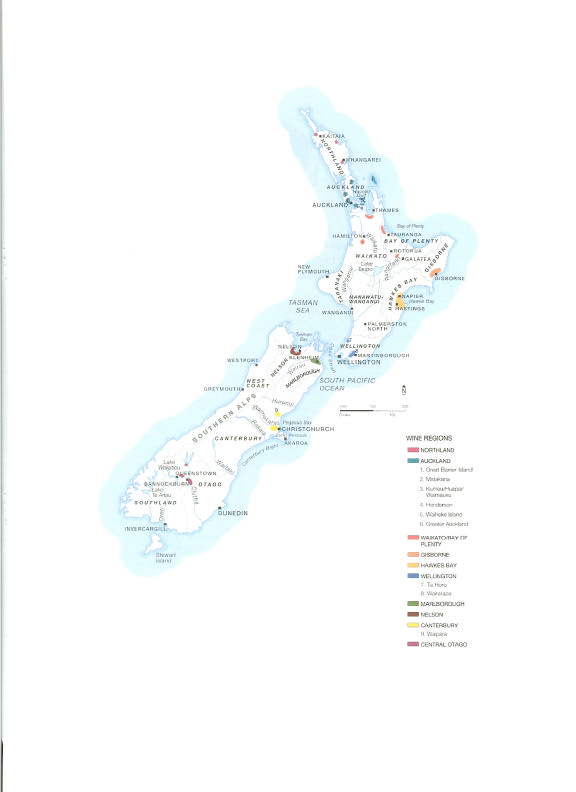 The most recent vintage, 2006, was of high quality. Overall grape tonnage was up 11% due to an 18% increase in producing vineyard area since 2004. The Pinot Noir harvest was increased by 50% compared to 2005. There was good warm summer and autumn weather. 2005 was a more difficult vintage with cool weather during flowering limiting yields and autumn frosts. 2007 produced a record harvest up 11% over 2006 sparked by excellent late summer and autumn weather. Unfortunately, many of the best New Zealand Pinot Noirs cannot be found in America. Many of the small, special boutique wineries sell their entire production in New Zealand or in countries where demand is established. For smaller wineries, it is difficult to organize distribution in enough areas here in the States to justify the expenses of export. Prices for New Zealand Pinot Noir are comparable to their counterparts in California and Oregon. In general, Central Otago Pinot Noir demands the highest prices. Martinborough
2005 Ata Rangi Martinborough Pinot Noir 13.5% alc., $37, screw cap. Imported by Epic Wines, Aptos, CA. · Darkly colored with pleasing cherry, spearmint and herbal aromas. Bitter woody, vegetal and medicinal flavors mar the enjoyment. Disappointing for the money. Website: www.atarangi.co.nz.
Marlborough
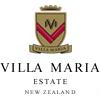 2005 Villa Maria Estate Reserve Marlborough Pinot Noir 13.5% alc., $36, screw cap. Imported by Vineyard Brands Inc., Birmingham, AL. This wine is a blend of the best clones from several vineyards in the Marlborough region. It is aged 9 months in 40% new French oak. · Richest, darkest fruit of all the wines sampled. Deep and bright black cherry perfume that is quite appealing. A riper style packed with sappy plum and blackberry fruits and a charred oak overlie that enhances the generous flavors. Tannins are like felt and the whole package is nicely balanced.
2005 Vidal Wines Estate Marlborough Pinot Noir 14% alc., $17, screw cap. Imported by New Zealand Pure, Issaquah, WA. Founded in 1905, Vidal is one of Hawkes Bay’s oldest boutique wineries. Grapes are sourced from the Awatere and Wairau river valleys. · Simple black cherry and subtle spice aromas and flavors with barely detectable tannins. Straightforward with commendable balance. Well worth the asking price. Website:www.vidal.co.nz.
Central Otago
2005 Amisfield Central Otago Pinot Noir 13.9% alc., $36, screwcap. Imported by Pasternak Wine Imports, Harrison, NY. · Cherry driven nose and tastes with a deft touch of oak. The attractive aromatics trump the simple fruit flavors. Website: www.amisfield.co.nz
 2006 Felton Road Central Otago Pinot Noir 14.5% alc., $38, screw cap. Imported by Wilson Daniels, St. Helena, CA.. Sourced from the Bannockburn Vineyard. · A complex nose with heady crushed cherry, plum, pepper and hay. A little heat peaks out but is not intrusive. Red and blue fruit flavors lead to a tangy citrus and cherry ending. The most striking feature of this wine is the powerful and persistent finish.
2006 Kirkland Signature (Costco) Central Otago Pinot Noir 13.5% alc., $18, screwcap. Produced by Wild South Vineyards, Marlborough and imported by Petco Inc., Lake Charles, Louisiana. · Strawberry and cherry aromatic and flavor profile with hints of oak and herbs. Alcohol peaks out from start to finish. Just ok.
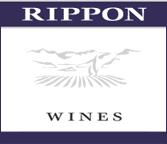 2004 Rippon Central Otago Pinot Noir 13% alc., $36. Imported by Station Imports, Colorado Springs, CO. Nicholas Mills, son of founder Rolfe and Lois Mills, is now the winemaker here and several other family members run this winery. Nicholas spent four years living in France studying viticulture and winemaking in Burgundy and Alsace. He worked for and was mentored by Alain et Sophie Meunier from Domaine Jean-Jacques Confuron, Nicolas Potel of Maison Nicolas Potel, Pascal Marchand of Domaine Vougeraie de Beauclair, and Aubert de Villaine of Domaine de la Romanee-Conti. Upon returning to the family vineyard in 2002, Nicholas instituted biodynamic farming with no herbicides. The vineyard, along the shores of Lake Wanaka and probably the most photographed in the world, is non-irrigated and virtually all on it’s own roots. · Light in color. Sensual perfume of cherry, toast and spice. Sappy red fruits kissed by cinnamon spice, velvety tannins and a clean finish with admirable length. Elegance personified. A complete wine. The website is www.rippon.co.nz.
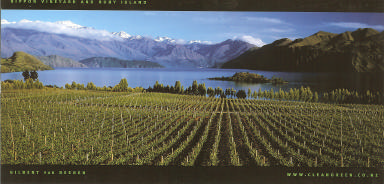 2006 Valli Bannockburn Vineyard Central Otago Pinot Noir 13% alc., $40, screw cap. Imported by RO Imports LLC, Napa, CA. Giueseppe Valli emigrated from an Italian winemaking background to New Zealand in the 1870s. Five generations later, great-grandsons Grant Taylor and Tim Valli continue the tradition. · This wine has an exotic perfume of mahogany, crayon, cardamom, chile and red cherries. Red fruit and herbal flavors are simple and clean, the texture is soft and there is a welcome acid kick at the end. Website: www.valli.co.nz.
2006 Wild Rock Cupids Arrow Central Otago Pinot Noir $16, screw cap. Imported by Korbrand Corp., New York, NY. · A decent Pinot with an interesting nose of red cherry, fresh-mowed hay, and a little barnyard. A grassiness also runs through the strawberry and raspberry flavors. Light and soft in the mouth, the wine finishes with mildly drying tannins.
Note: Two older New Zealand Pinot Noirs were tasted. The 2002 Olssens Jackson Barry Central Otago Pinot Noir was closed with a cork and was oxidized. The 2002 Rockburn Central Otago Pinot Noir was also closed with a cork and was corked.
Twomey Cellars More Than MerlotTwomey Cellars sprang from a dream of owners Raymond Twomey Duncan and family to employ a labor-intensive approach (soutirage traditional) utilized by the classified growths of Bordeaux to produce a Napa Valley Merlot of great distinction. The soutirage traditional is a slow process of decanting the wine from one barrel to another without the use of pumps. The wine is transferred by gravity using specially constructed barrels from France. In 1999, the Duncan family, founders of Silver Oak Cellars, purchased the 150-acre Soda Canyon Ranch in southeastern Napa Valley and planted a vineyard to Merlot. Winemaker Daniel Baron, who had experience working in wineries in Pomerol and St. Emilion, was hired. Sideways jokes aside, the result was a classic and superb Merlot which has received many accolades. In 2000, the Duncans acquired the 9-acre West Pin Vineyard on Westside Road in the Russian River Valley. Two acres previously planted to the Martini clone in 1989 were used solely in the first two vintages of Twomey Pinot Noir. The remaining 7 acres were planted to a mixture of Pommard and Dijon clones and form the nucleus of the wine since the third vintage in 2004. Winemaking is very traditional. During fermentation in open-top fermenters, punch downs are carried out every six hours, the wine is pressed in a small basket press, and transferred to French Burgundy barrels where they complete malolactic fermentation. The wine is aged for 16 months (8 months of which is “sur lies”).  2005 Twomey Cellars Russian River Valley Pinot Noir 14.7% alc., $50. Sappy aromatic core of spiced cherries and violets with a hit of sweet oak. Similar to the 2004 vintage with cherry-driven flavors and a deft touch of oak. Plenty of grace and splendor. Patty asked for a second glass - enough said. Twomey Cellars has two tasting rooms which are open Mon-Sat from 9-4. Tasting is $5 including a Twomey tasting glass. Tours are by appointment (tours@twomeycellars.com). The Calistoga tasting room (in the former Stonegate Winery) is located at 1183 Dunaweal Lane and the Healdsburg tasting room is in the former Roshambo Winery on Westside Road at 3000 Westside Road. There is limited retail distribution of Twomey wines. A Napa Valley Sauvignon Blanc is also available. 800-505-4850. The website is www.twomeycellars.com.
Pinot BriefsPinot Lovers Cruise Dan Kosta, co-owner of Kosta Browne Winery in Sebastopol, will participate in a Windstar Cruises Mediterranean Pinot Lovers Cruise, June 8-15, 2008. Noted chef Joachim Splichal will direct the winemaker-led dinners. Barrel tastings of Pinot Noir will be featured. 800-258- 7245, www.windstarcruises.com. Supermarket Pinots I recently tasted two inexpensive “supermarket” Pinot Noirs. 2005 Blackstone California Pinot Noir 13.5% alc., $11. A simple wine with wild strawberry and cherry flavors and noticeable oak throughout. Alcohol peaks out on the nose and the finish is harsh. Can’t recommend. 2005 Frei Brothers Reserve Russian River Valley Pinot Noir 13.5% alc., $18. Wood accented red fruit nose with a hint of funk. Light in body with simple cherry, cola and toasted oak flavors. Decent. Pinot Noir Vineyard Prices Escalate According to Wines & Vines (October, 2007), the increased demand for Pinot Noir has caused Sonoma County vineyard prices to soar above $100,000 per acre (Napa prices, in comparison are $50,000 to $275,000 per acre). For the first time ever in 2006, Pinot Noir achieved a higher price than Cabernet in Sonoma. Rusacks plant Pinot 26 miles across the sea Geoff and Alison Wrigley Rusack, owners of Rusack Winery in the hills above Solvang in the Santa Ynez Valley, have planted 7 acres of Chardonnay, Pinot Noir and Zinfandel on Catalina Island, located 26 miles off the Southern California shoreline. The property was originally owned by Alison’s great-grandfather, William Wrigley (of chewing gum fame). 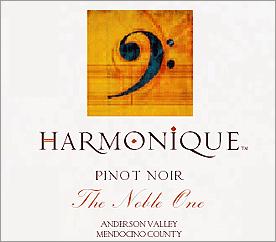 New Releases of Favorites 2005 Bonaccorsi Wine Co Melville Vineyard, Fiddlestix Vineyard and Cargasacchi Vineyard Pinot Noirs (www.bonawine.com). 2005 Dutton-Goldfield McDougall and Sanchietti Pinot Noirs (www.dutton-goldfield.com). 2005 Pey-Marin Vineyards “Tros Filles” Marin County Pinot Noir (www.marinwines.com). 2005 Davis Family Vineyards Russian River Valley Pinot Noir (www.daviswines.com). Marcassin Finally Through the years I have had the enjoyable opportunity to taste at least one Pinot Noir from every major California producer except one: Marcassin. The Marcassin Pinot Noirs are highly rated and much sought after and only sold through a full mailing list. A friend, Bob Mosby, brought a bottle of 1998 Marcassin Marcassin Vineyard Sonoma Coast Pinot Noir to share at dinner a few weeks ago. It was a revelation. A superb wine with glorious color, stunning aromatics and perfectly harmonious Pinot flavors. An epiphany.
Hospices of Sonoma Barrel Auction 2008Advance ticket sales for the 2008 Hospices of Sonoma Pinot Noir Barrel Auction Weekend have begun and event organizers are extending a 10% discount to those who purchase tickets now through November 30, 2007. Hospices of Sonoma is modeled after the famous Hospices de Beaune auction in France and is the largest Pinot Noir barrel auction in the United States. 40 of the most highly regarded Pinot Noir producers from the Sonoma Coast, Russian River Valley, Sonoma-Carneros, and Green Valley appellations vinify special one-time cuvées for the event. The 2007 event, which was a sell-out, raised more than $450,000 from the barrel auction alone. The 2008 event will be held the weekend of May 2-4 in the Russian River Valley. Festivities commence with special Winemaker Dinners at various locations on Friday evening, May 2. The barrel tasting and auction of the 2007 vintage Pinot Noirs, followed by a gala dinner, is on Saturday, May 3, at a site to be announced. The weekend concludes at Lynmar Winery with La Paulée - a traditional French social - on Sunday, May 4. Wineries hosting Friday evening Winemaker Dinners are DeLoach Vineyards, Dutton Estate Winery, Emeritus Vineyards, Failla Wines, Freeman Vineyard & Winery/Kosta Browne, Gary Farrell Vineyards & Winery, Halleck Vineyard, Hartford Family Winery, J Vineyards & Winery, Landmark Vineyards, Marimar Estate, Olivet Lane Vineyard/TR Elliott, and Paul Hobbs Wines. Beneficiaries of the 2008 event include The Okizu Foundation, which assists children with cancer, The Children’s Village of Sonoma County, which serves siblings in foster care, and the WCC Charitable Foundation, which administers the auction and provides temporary housing for out-of-town families with children hospitalized in Sonoma County. Ticket prices range from $150 per person for the Winemaker Dinners to $400 per person for the Saturday gala. Special combo ticket pricing is also available. For more information or to purchase tickets, go online to www.hospicesofsonoma.org or call 707-823-9463.
Share Our Wine Auction Orange CountyThe 3rd Annual Auction Orange County for the Share Our Wine Foundation will be held on Saturday, November 17, 2007 at Strawberry Farms Golf Club, Irvine, CA. The auction raises funds for Orangewood Children’s Foundation which benefits abused and neglected children of Orange County. Last year, approximately 2,700 children were taken from their caregivers due to unsafe conditions and placed temporarily at Orangewood Children’s home. Many have experienced the most serious forms of physical and sexual abuse. What makes the Orangewood Children’s Foundation unique is the focus on long-term solutions to these issues. I currently serve on the Board of Directors for Share Our Wine. This year’s event will feature over 300 wine related lots at the silent auction including wines by Screaming Eagle, Harlan, DRC La Tache, Colgin, Sine Qua Non, Aubert, Williams Selyem and more. Many large format bottles will be offered. The live auction will feature one-of-a-kind trips to Bordeaux, Champagne, Sonoma, Napa, Anderson Valley, Paso Robles, Oregon and Hawaii. Individual tickets are $100 plus a wine donation of a bottle of wine valued at $50 or more per person to be auctioned at the event. Last year’s event sold out within days. Advanced registration is required. To register online: www.shareourwine.org. For information, phone 800-527-6201.
Surface Area (Acres) of Pinot Noir Worldwide(Source: Mondial du Pinot Noir) France 63,929 Germany 18,498 United States 10,939 Switzerland 10,369 Italy 8,743 Australia 4,708 Romania 3,657 New Zealand 1,982 Hungary 1,236 South Africa 988 Portugal 887 Austria 719 Argentina 571 Chile 247 Colombia 124 Canada 77 Luxembourg 20
Predicting Wine Aging is TrickyOne of my friends is prone to say, “It’s not ready to drink. It’s a baby, a Lolita.” Sometimes I wonder if he ever enjoys a bottle of wine, since he is always thinking it might be better with more age. Judgments about when wine will reach a peak are very subjective. You need to own six to twelve bottles of every wine to follow it’s development and know when the wine has reached its “peak.” For me, I don’t like to be encumbered by worrying about how long to cellar a wine - I just pop the cork when I feel like it. I actually prefer younger wines that still have lively fruit and are fresh. Most American Pinot Noirs are not made with aging in mind and do not improve noticeably in the bottle. It has been quoted by Sommelier Lauriann Greene-Solin (see French Wine Explorers) that only 20% of wines will improve with aging beyond one or two years. This is because current winemaking favors fruitiness and freshness, not extraction of tannins needed for a wine to age well. Only quality wines become more interesting with cellaring. Cellaring a bad bottle of wine for ten years will not turn it into a better wine. Since only about 30% of wines are “quality,” and since some of these quality wines are not meant for aging, it can be estimated that 20% of wines can be aged successfully. Good balance is an absolute requirement for aging. Balance must be present from the beginning, because wines do not become more balanced with time in the cellar. Sommeliers like Lauriann also talk about persistence. Count the number of seconds a wine’s aroma lasts on your palate once you spit or swallow the wine. If it lasts longer than six seconds, the aging potential is good. More than eight seconds, and the wine will likely last a number of years in the cellar. The golden rule of cellaring wine is not let it slip past its prime. When a wine is dead, it will never come back to life. When you discover a wine that is at its peak, pull the cork on every bottle you own, invite me over, and let’s party. Don’t be disappointed, however, if I still prefer a Lolita to a decrepit Grandma Moses. |